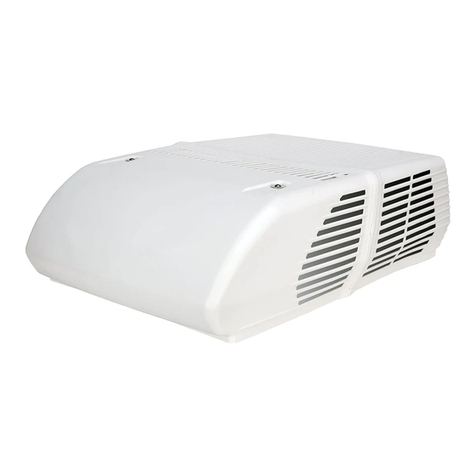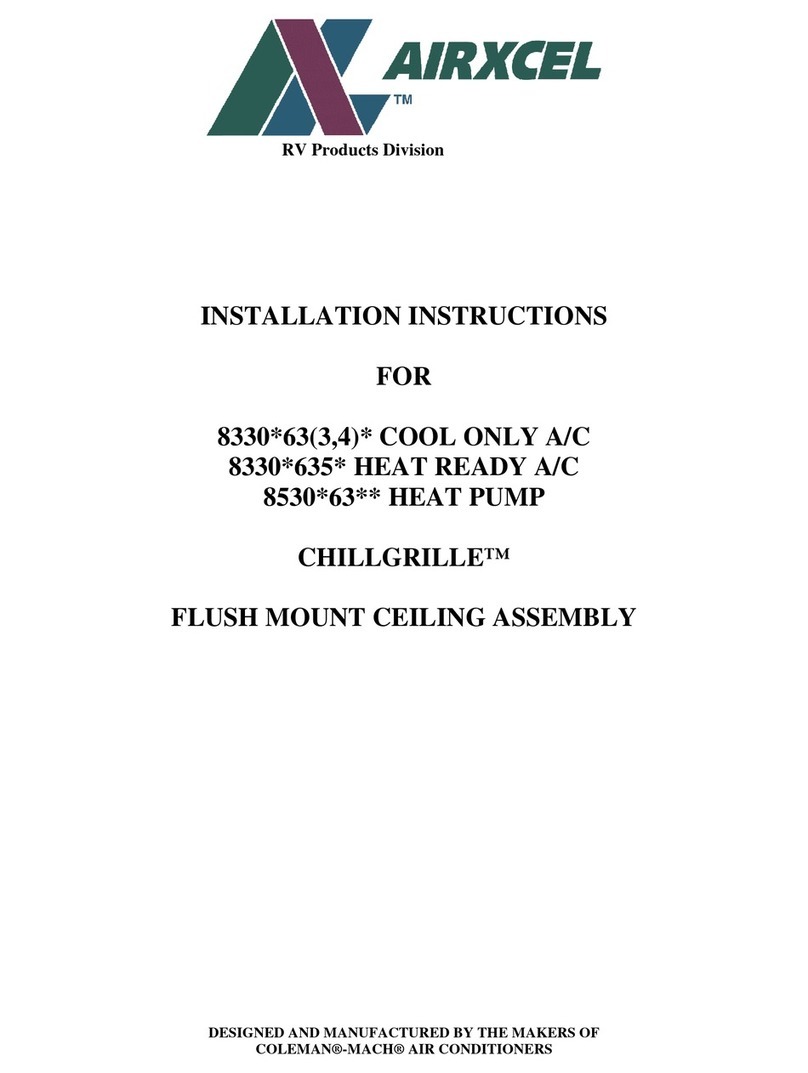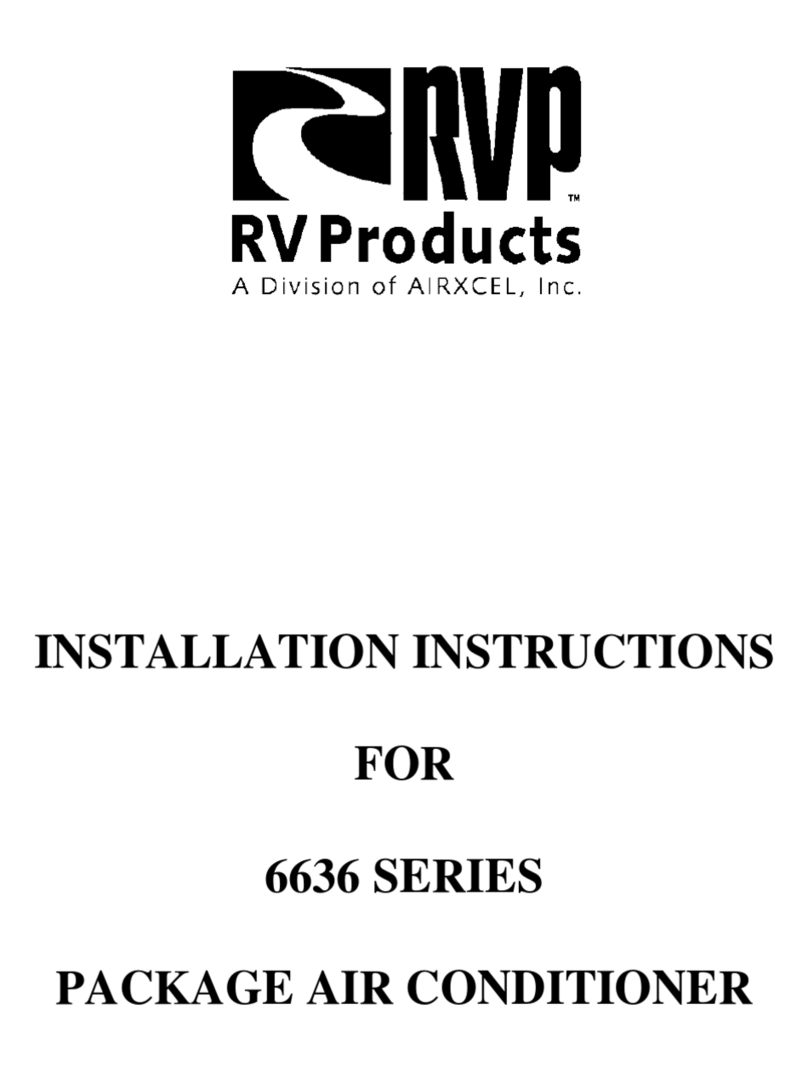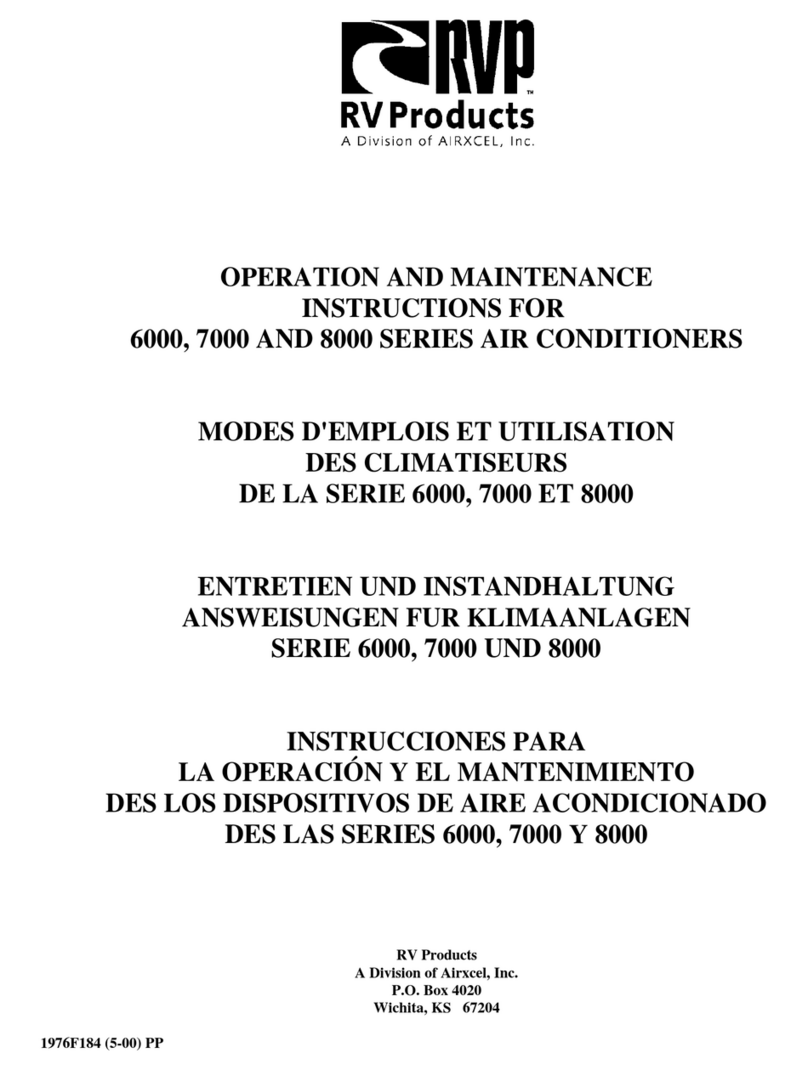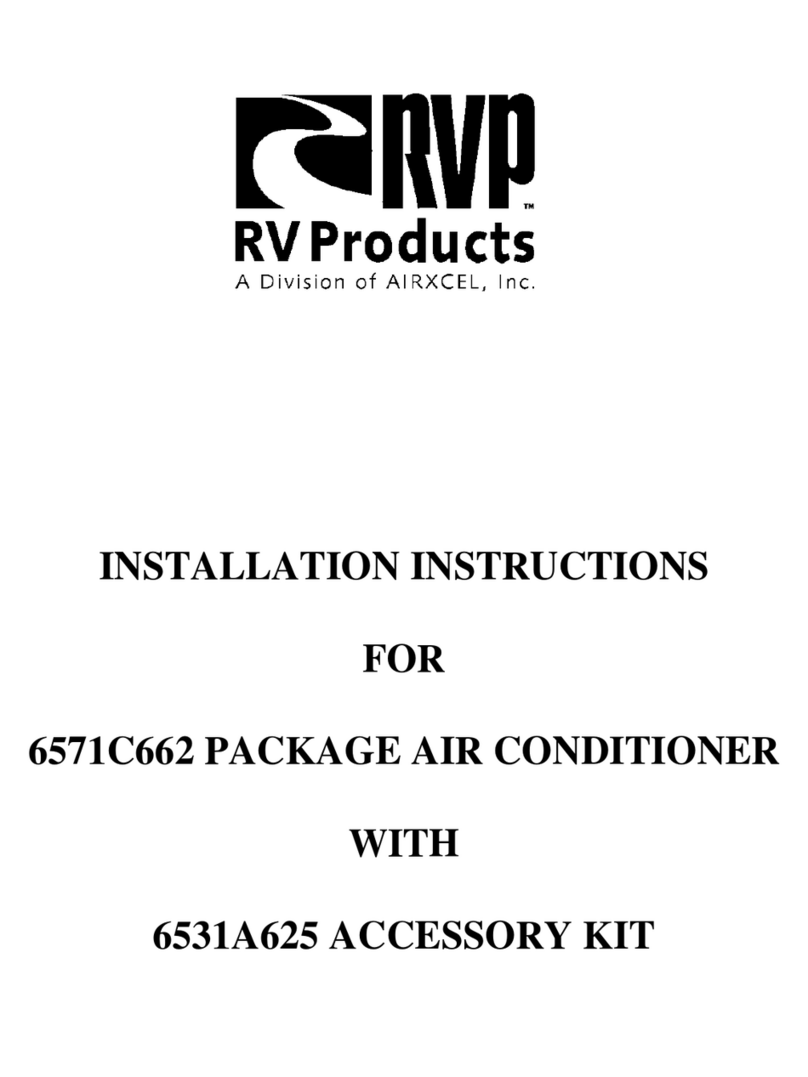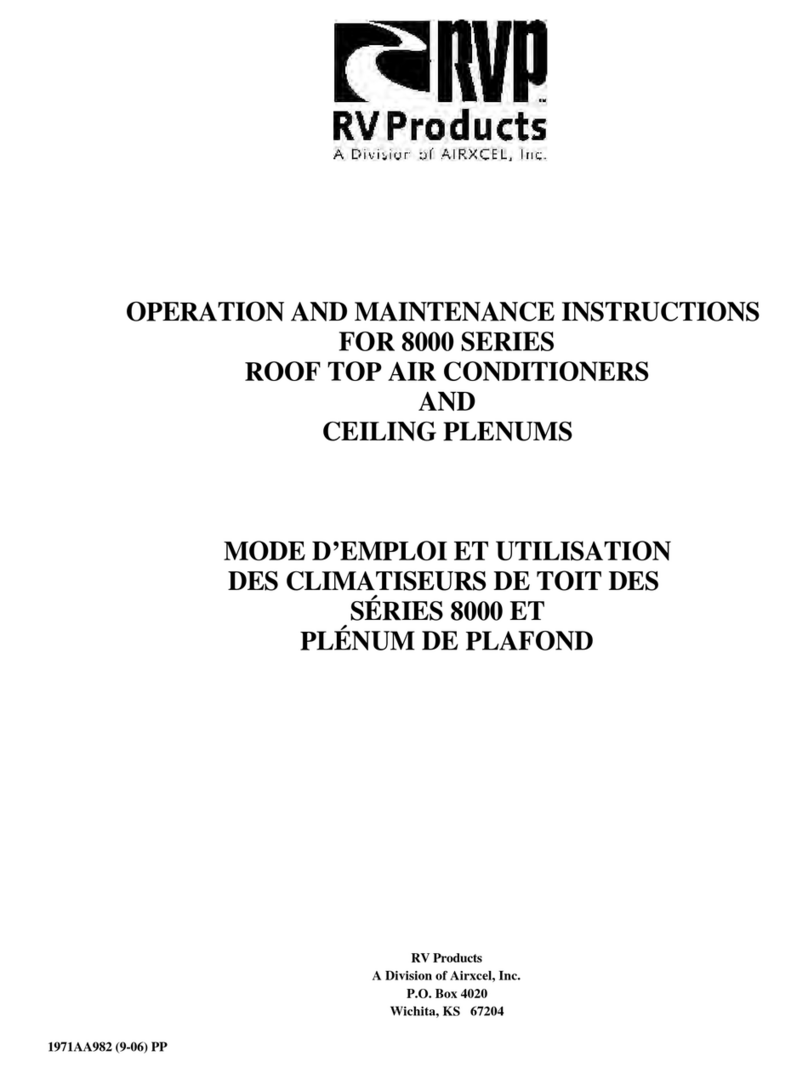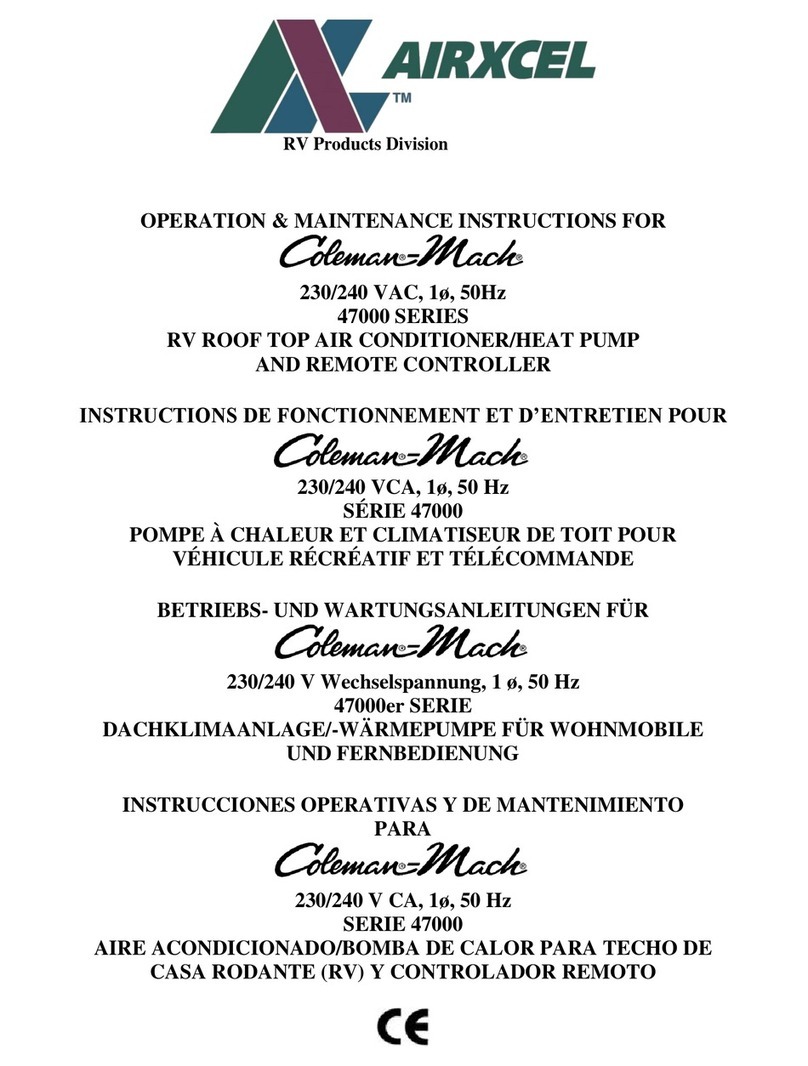
5
The purpose of this part of the Service Manual is to acquaint
the Service Technician with the system components so that
when he has a problem, he can intelligently analyze and
isolate the problem and efficiently correct it.
BASIC COMPONENTS AND
THEIR FUNCTIONS
I. REFRIGERANT CIRCUIT
1. Refrigerant Charge
The systems covered by this service manual all use a
refrigerant called monochlorodifluoromethane (better known
as R-22).
We know that R-22 is not a deadly gas because many of us
have breathed it many times and we are still living. But, no
one has said that R-22 is completely safe to breathe; so, a
wise service technician will always keep a work space well
ventilated if R-22 can escape into the air. IF R-22 COMES
IN CONTACT WITH ANY OPEN FLAME, PHOSGENE
GAS IS CREATED AND ONE SHOULD AVOID
BREATHING THE FUMES.
The temperature at which R-22 changes to toxic gases and
acids varies with the amount or concentration of water
present i.e. the greater the concentration of water, the lower
the temperature and vice versa. High temperatures normally
exist inside a refrigeration circuit, so we must keep the circuit
as absolutely dry as possible to prevent the formation of
destructive acids.
Liquid R-22 in the atmosphere will always be at about -41°.
Therefore, always wear safety glasses when working with
R-22.
Again unburned R-22 is not a deadly gas, so by using
reasonable safety precautions, the service technician will not
be hurt by it.
In addition to being almost non-toxic, R-22 is non-
flammable, non-explosive, non-corrosive and miscible
(mixable) with oil. It also has a rather high latent heat value.
This means that is must absorb a large amount of heat per lb.
to vaporize or change from a liquid to a vapor; and it must
give up a large amount of heat per lb. to condense or change
from a vapor to a liquid.
2. High and Low Sides
It is customary for air conditioning technicians to use the
terms high side and low side. In doing so, we refer to the
parts of the refrigeration circuit which, when the system is
running, contain high pressure refrigerant (high side) and
low pressure refrigerant (low side). The high side of these
systems exists from the discharge port of the compressor to
the cap tube. The low side is from the cap tube to the
compressor cylinders. The dividing points then are the cap
tube and compressor cylinders.
The high side pressure is also referred to as head pressure or
condensing pressure, and the low side pressure is also
referred to as suction pressure or evaporator pressure.
It is impossible to state the exact pressures that will exist in
the high side or low side because those pressures will both
vary with different temperature and humidity conditions both
inside and outside the recreational vehicle.
3. Capillary Tube (Cap Tube)
The refrigerant enters the cap tube from the condenser as a
warm high pressure liquid. As the refrigerant flows through
the small diameter cap tube, the pressure drops rather rapidly.
As the pressure drops, a tiny amount of the liquid refrigerant
will vaporize. This vaporization requires heat which must
come from the liquid refrigerant itself - thus the liquid
temperature is constantly lowered as it passes through the cap
tube. As the refrigerant leaves the cap tube, it is still mostly
liquid; however, a small portion has changed to a vapor
called flash gas. When the liquid refrigerant passes from the
cap tube to the evaporator, it is at low side pressure and will
therefore, vaporize at low temperature as it picks up heat
from the air being conditioned.
4. Evaporator Coil
The purpose of the finned evaporator coil is to transfer the
heat from the warm and moist indoor air to the cold low
pressure refrigerant.
As the heat leaves the air, the air temperature drops and some
of the moisture in the air condenses from a vapor to a liquid.
The liquid water (condensate) is drained onto the roof of the
recreational vehicle. As the heat enters the refrigerant in the
evaporator, it causes the refrigerant to evaporate (change
from a liquid to a vapor). Thus the name – evaporator.
The refrigerant remains at nearly constant temperature
(called evaporator temperature or low side saturation
temperature) in the evaporator as long as there are both liquid
and vapor together. However, near the outlet of the
evaporator coil, all of the liquid has boiled (evaporated) away
and from there on the temperature of the vapor rises (the
vapor becomes superheated). It is necessary that the vapor
become superheated because it passes through the suction
line to the compressor and the compressor can only pump
superheated vapor – any vapor (which might be present if the
vapor were not superheated) could cause serious mechanical
damage to the compressor.
